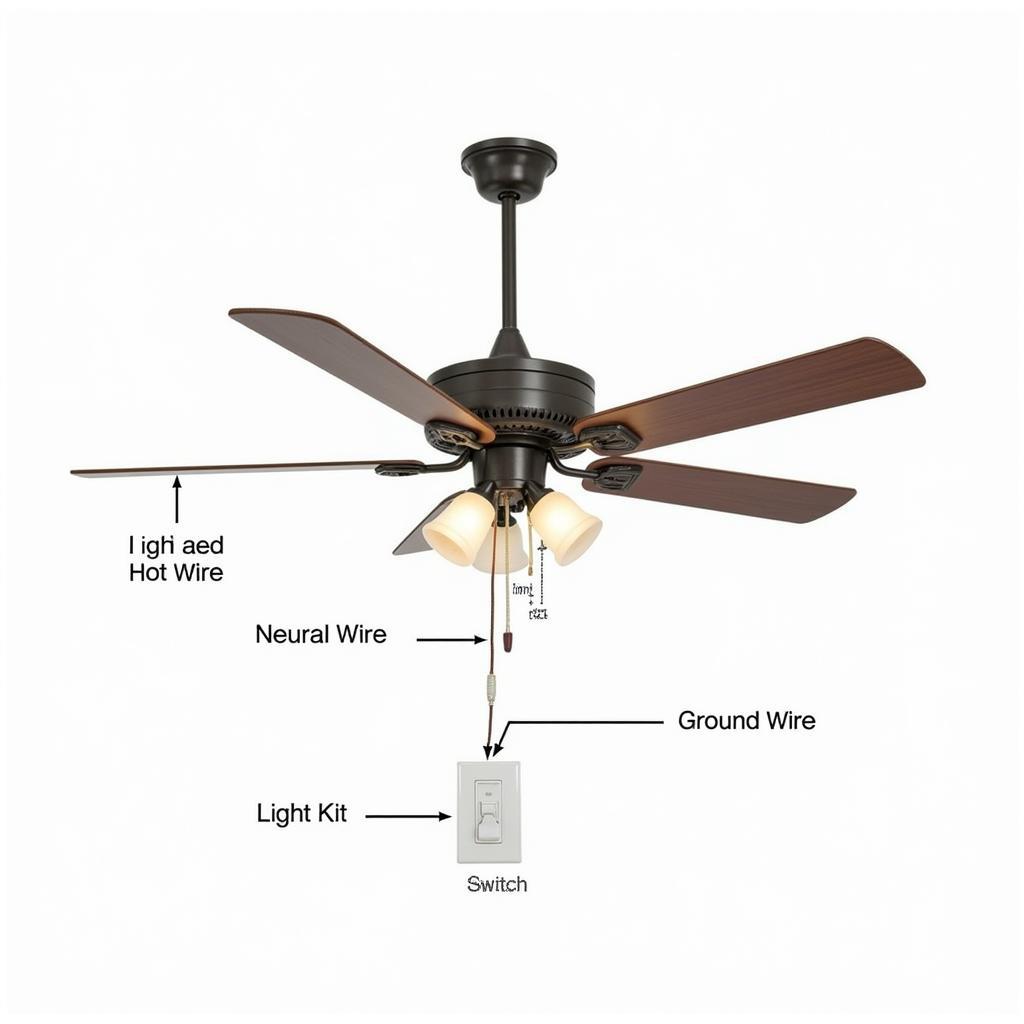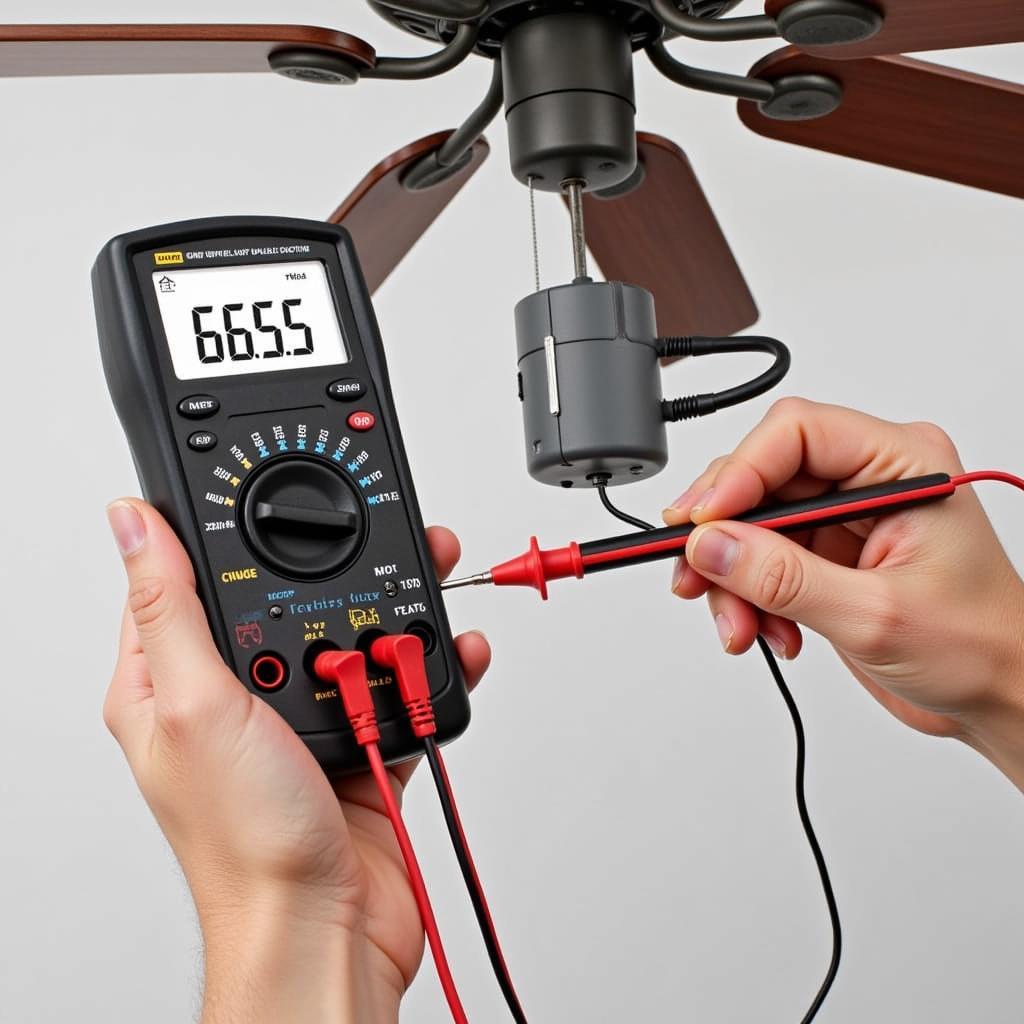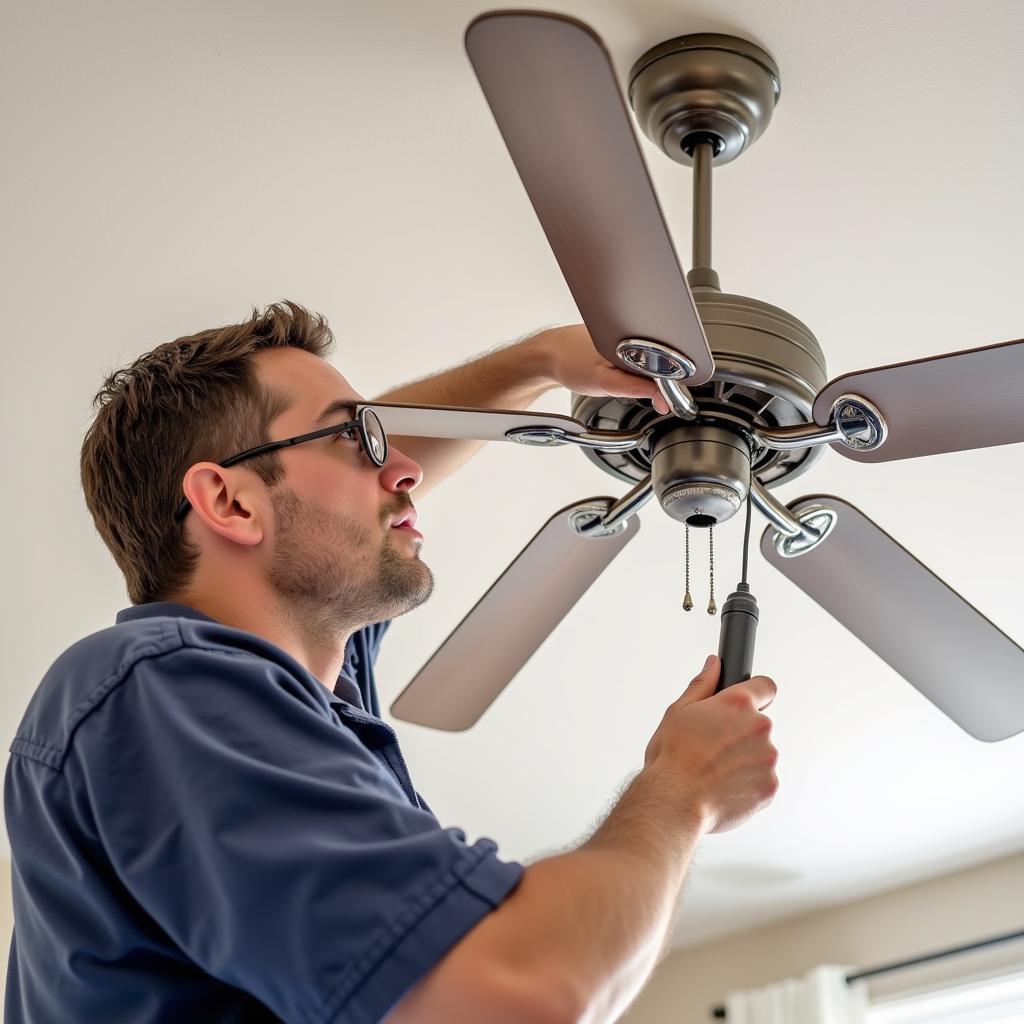If your ceiling fan keeps tripping the breaker, you’re not alone. This is a common electrical issue that can be frustrating and even dangerous. This guide will help you diagnose the problem and provide practical solutions to get your ceiling fan working safely and reliably.
Understanding Why Your Ceiling Fan Trips the Breaker
Several factors can cause a ceiling fan to overload the circuit breaker, ranging from simple wiring issues to problems within the fan itself. Overloading occurs when the electrical current drawn by the fan exceeds the breaker’s capacity, causing it to trip as a safety measure to prevent overheating and potential fire hazards.
Common Causes of a Tripping Breaker
- Overloaded Circuit: Too many appliances on the same circuit as your ceiling fan can draw excessive current, tripping the breaker.
- Short Circuit: A short circuit occurs when a hot wire comes into contact with a neutral wire or a ground wire, creating a surge of electricity that trips the breaker. This can happen within the fan’s motor, wiring, or the switch.
- Ground Fault: A ground fault occurs when a hot wire comes into contact with a grounded surface, such as the metal housing of the fan. This also creates a surge of electricity and trips the breaker.
- Faulty Wiring: Loose connections, damaged wires, or incorrect wiring can lead to short circuits or ground faults.
- Malfunctioning Fan Motor: A worn-out or damaged fan motor can draw excessive current, overloading the circuit.
- Incorrect Breaker Size: If the breaker is too small for the circuit, it may trip even under normal operating conditions.
 Ceiling Fan Wiring Diagram Showing Potential Short Circuit Points
Ceiling Fan Wiring Diagram Showing Potential Short Circuit Points
Troubleshooting Your Ceiling Fan
Before calling an electrician, you can try some basic troubleshooting steps. Always turn off the power at the breaker box before working on any electrical components.
- Check the Circuit Load: Unplug or turn off other appliances on the same circuit as the ceiling fan. If the breaker stops tripping, the circuit is overloaded.
- Inspect the Fan: Carefully examine the fan for any visible signs of damage, such as frayed wires, loose connections, or burnt components.
- Test the Wall Switch: A faulty wall switch can also cause the breaker to trip. You can test the switch with a multimeter.
- Check the Fan Motor: If you suspect a faulty motor, you can test it with a multimeter.
 Testing Ceiling Fan Motor with Multimeter to Identify Faults
Testing Ceiling Fan Motor with Multimeter to Identify Faults
Solutions for a Tripping Breaker
- Reduce Circuit Load: Move some appliances to a different circuit or avoid using multiple high-wattage appliances simultaneously.
- Repair or Replace Faulty Wiring: If you find damaged or loose wires, repair them or replace the wiring.
- Replace the Wall Switch: If the wall switch is faulty, replace it with a new one.
- Replace the Fan Motor: If the fan motor is faulty, it’s often more cost-effective to replace the entire fan.
- Upgrade the Breaker: If the breaker is too small, consult a qualified electrician to determine the correct size and upgrade it.
“A properly functioning ceiling fan shouldn’t trip the breaker,” says Bob Johnson, a licensed electrician with over 20 years of experience. “If you’ve tried basic troubleshooting and the problem persists, it’s essential to call a qualified electrician to diagnose and fix the issue safely.”
 Electrician Inspecting Ceiling Fan Wiring for Safety and Functionality
Electrician Inspecting Ceiling Fan Wiring for Safety and Functionality
Conclusion
A ceiling fan that keeps tripping the breaker can be a sign of a serious electrical problem. By understanding the common causes and following the troubleshooting steps outlined in this guide, you can often identify the issue and implement the appropriate solution. However, if you’re unsure about any electrical work, it’s always best to consult a qualified electrician to ensure your safety and prevent further damage. Remember, dealing with electricity requires caution, and professional help is often the best approach.
FAQ
- What should I do if my ceiling fan keeps tripping the breaker even after I’ve tried troubleshooting? Consult a qualified electrician.
- Can I replace the breaker myself? It’s best to have a qualified electrician handle breaker replacements.
- Is it safe to use a ceiling fan with frayed wiring? No, it’s dangerous and could cause a fire.
- How often should I inspect my ceiling fan for problems? At least once a year.
- Can a faulty light kit cause the breaker to trip? Yes, a short circuit in the light kit can trip the breaker.
- What size breaker do I need for a ceiling fan? It depends on the fan’s wattage and other appliances on the circuit. Consult an electrician.
- Can I run a ceiling fan and a light on the same circuit? Yes, as long as the circuit isn’t overloaded.
For more information about home electrical safety, visit our articles on electrical troubleshooting and home maintenance.
When you need help, contact us! Phone: 0903426737, Email: [email protected] Or visit our address: Lot 9, Area 6, Gieng Day Ward, Ha Long City, Gieng Day, Ha Long, Quang Ninh, Vietnam. We have a 24/7 customer service team.





